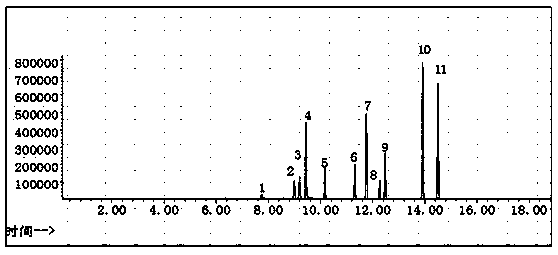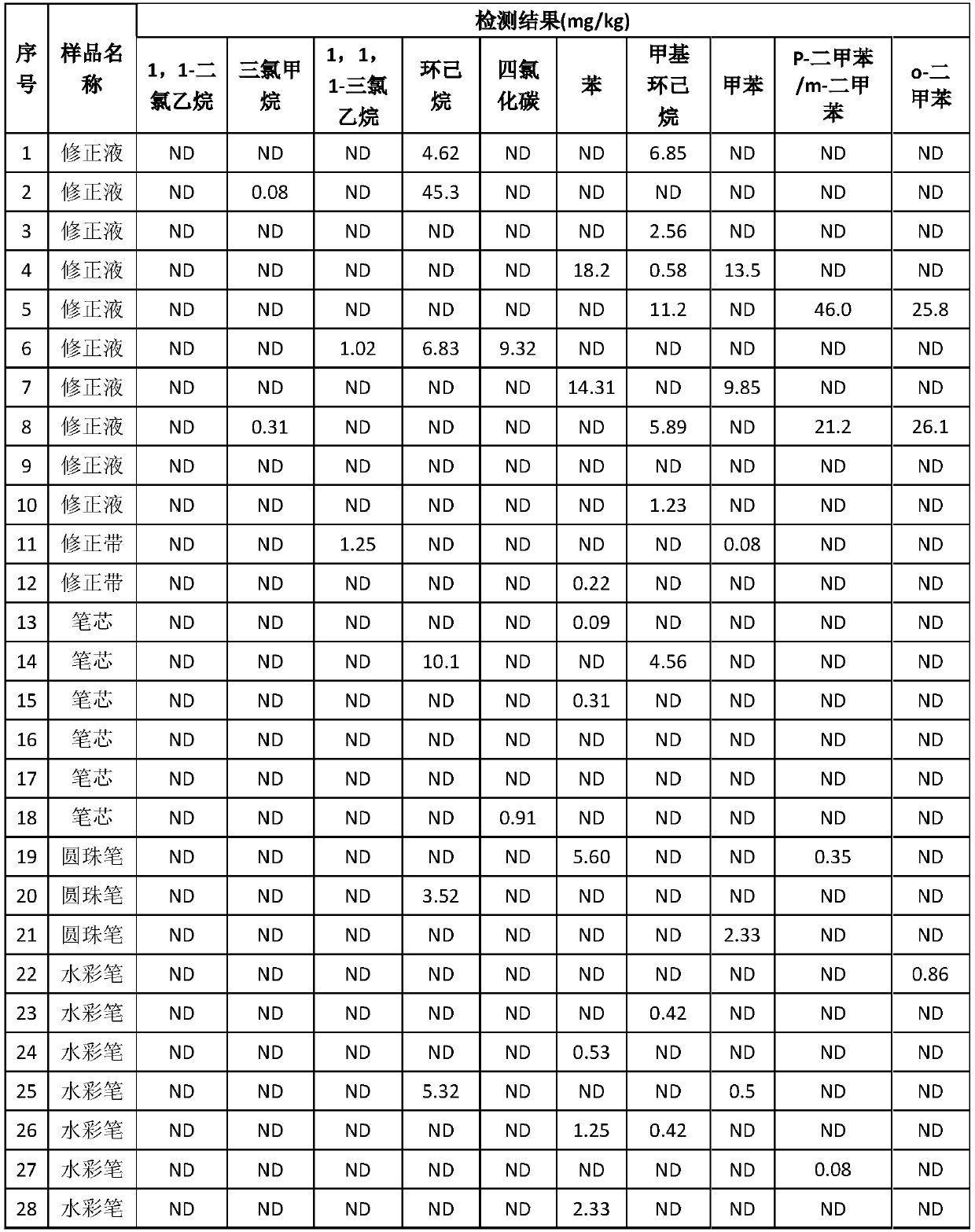Headspace-gas chromatography/mass spectrometry (HS-GC/MS) measurement method of eleven types of volatile harmful substances in student supplies
A technology of harmful substances and student supplies, applied in the direction of measuring devices, scientific instruments, instruments, etc., can solve the problems of chronic poisoning of the human body, consumption of organic solvents, and long time consumption, so as to eliminate the interference of analysis, improve detection sensitivity, and avoid cumbersome steps Effect
- Summary
- Abstract
- Description
- Claims
- Application Information
AI Technical Summary
Problems solved by technology
Method used
Image
Examples
Embodiment Construction
[0029] In order to better understand the present invention, the content of the present invention is further illustrated below in conjunction with the examples, but the content of the present invention is not limited to the following examples, and the examples should not be regarded as limiting the protection scope of the present invention.
[0030] Instruments used in the examples: HS40 headspace sampler (including automatic headspace purging and trapping), Agilent 7890B-5977A gas chromatography-mass spectrometry (GC-MS), analytical balance (Sartorius BS224S) from PE Company in the United States : Sensitive amount 0.1mg.
[0031] Drugs and standard products used in the examples: 1,1-dichloroethane, chloroform, 1,1,1-trichloroethane, cyclohexane, carbon tetrachloride, benzene, methylcyclohexane, Toluene, o-xylene, m-xylene, p-xylene. Purity > 99%, the standard products were purchased from the National Standard Center.
[0032] Samples of student supplies used in the embodimen...
PUM
| Property | Measurement | Unit |
|---|---|---|
| correlation coefficient | aaaaa | aaaaa |
| recovery rate | aaaaa | aaaaa |
Abstract
Description
Claims
Application Information
 Login to View More
Login to View More - R&D
- Intellectual Property
- Life Sciences
- Materials
- Tech Scout
- Unparalleled Data Quality
- Higher Quality Content
- 60% Fewer Hallucinations
Browse by: Latest US Patents, China's latest patents, Technical Efficacy Thesaurus, Application Domain, Technology Topic, Popular Technical Reports.
© 2025 PatSnap. All rights reserved.Legal|Privacy policy|Modern Slavery Act Transparency Statement|Sitemap|About US| Contact US: help@patsnap.com



